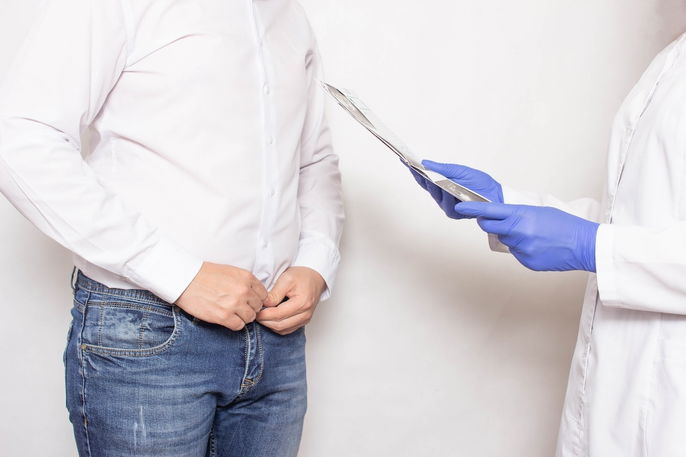Penis enlargement is often a question that men will investigate, however this practice is not recommended by urologists. Techniques for penis enlargement, like suction pumps, penile rings or medication, are not scientifically proven and can lead to consequences like permanent pain, nerve damage, blood clot formation, tissue damage to the tissues and erectile dysfunctions.
On the other hand, men with a micropenis, which is a rare condition associated with a smaller than average penis size, a urologist may consider the possibility of a surgical intervention. This surgery is risky, however, and may not be recommended for cosmetic reasons only.
Penis enlargement techniques are most often performed by teenagers, who are still undergoing normal growth processes that they may attribute to the techniques. Due to the lack of evidence regarding penis enlargement, it is best to consult a urologist if you are dissatisfied with the size of your penis before starting any treatment or using any of the existing techniques.

How does penis enlargement work?
Penis enlargement techniques that men may seek out include:
1. Jelqing exercises
Jelqing exercises or messages are a natural way to increase penis size. There are usually no contraindications or risks associated with these exercises. It aims to increase blood circulation to the genitals, which can elongate and thicken the shaft.
Although it is considered to be safe, the efficacy of Jelqing exercises are not scientifically proven, and therefore, they are not recommended by doctors. In addition, if you are performing the massages incorrectly, aggressively, or too frequently, you may experience pain, skin irritation, injury and tissue damage.
2. Enlargement equipment
Enlargement equipment is usually placed on the base of the shaft and involves the application of pressure to promote enlargement. It is thought that the continued use of this type of equipment can promote penis enlargement when the penis is erect.
At this moment, there are little to no studies that support the positive effects of this equipment and therefore they are not recommended by urologists. In addition, the use of this type of equipment is not comfortable, and can exert excessive force on the penis, leading to injury, nerve damage and the formation of blood clots.
3. Suction pumps
Suction pumps are usually prescribed by urologists to treat erectile dysfunction, as they can increase the quantity of blood in the penis during an erection. Therefore, a pump should only be used as indicated by a doctor.
There is no scientific proof that supports the use of suction pumps to increase penis size. Its effects are usually temporary, only during an erection, and therefore they are not generally recommended. Frequent use of a suction pump when there are no underlying issues can cause tissue problems and lead to eventual impotence.
4. Use of medication
There are many pills and creams on the market that contain vitamins and hormones that are believed to increased penis size. Often, they are marketed as tools to increase blood flow to the penis, which results in a longer-lasting erection. However, these medications will often just contribute to erections, and not exactly to penile size or volume.
In addition, some medications can increase health risks in men, and interact with medications that are already being used.
5. Penile rings
Using penile rings are thought to increase the amount of blood within the shaft during erection, which can result in a temporary increase in size. However, there are no studies available that prove this effect. Rings are considered to be dangerous, as rings that are too tight or stay on the penis for too long can cut off circulation in the area, leading to complications.
6. Penis fillers
Penile fillers are a more recent technique that are thought to be effective in increasing the circumference, and in some cases, the length of the shaft. With this technique, hyaluronic acid is injected beneath the penile skin.
Although it is a fairly simple procedure, it is not recommended by most doctors due to the associated risks. Factors like the quantity and quality of the injected substance can increase the risk for complications like a serious inflammatory response, infection, necrosis of the genitals and even amputation.
In addition to the risks associated with the procedure, there are not enough studies available to show a standardized approach to the injections. These approaches need to be well-studied over time to better understand the actual steps involved and the expected final results.
7. Enlargement surgery
Surgery that is done to increase penis size is a last resort to be considered by a urologist.There are several risks associated with surgical interventions, like risk for infection, scars and deformities, and erectile dysfunction. Changes that are noted following surgery are usually related to the aspiration of excess fat tissue in the area, which makes the penis appear larger.
Penis enlargement surgery is not indicated for men solely desire a larger size, but it can be considered for men diagnosed with a micropenis who did not experience results with more conservative approaches.






























